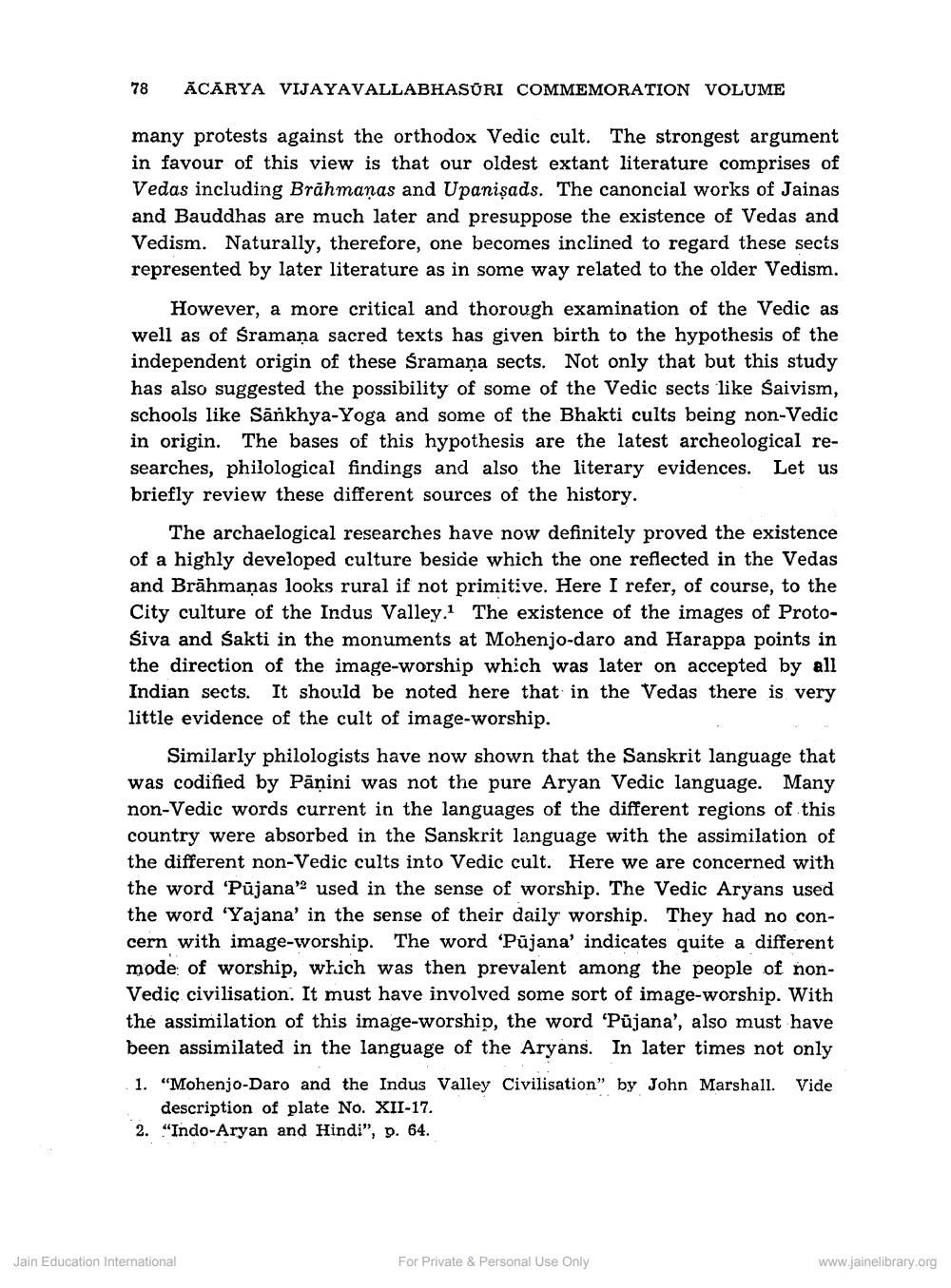________________
78
ACĂRYA VIJAYAVALLABHASŪRI COMMEMORATION VOLUME
many protests against the orthodox Vedic cult. The strongest argument in favour of this view is that our oldest extant literature comprises of Vedas including Brāhmaṇas and Upanişads. The canoncial works of Jainas and Bauddhas are much later and presuppose the existence of Vedas and Vedism. Naturally, therefore, one becomes inclined to regard these sects represented by later literature as in some way related to the older Vedism.
However, a more critical and thorough examination of the Vedic as well as of śramana sacred texts has given birth to the hypothesis of the independent origin of these sramaņa sects. Not only that but this study has also suggested the possibility of some of the Vedic sects like Saivism, schools like Sankhya-Yoga and some of the Bhakti cults being non-Vedic in origin. The bases of this hypothesis are the latest archeological researches, philological findings and also the literary evidences. Let us briefly review these different sources of the history.
The archaelogical researches have now definitely proved the existence of a highly developed culture beside which the one reflected in the Vedas and Brāhmaṇas looks rural if not primitive. Here I refer, of course, to the City culture of the Indus Valley. The existence of the images of ProtoSiva and Sakti in the monuments at Mohenjo-daro and Harappa points in the direction of the image-worship which was later on accepted by all Indian sects. It should be noted here that in the Vedas there is very little evidence of the cult of image-worship.
Similarly philologists have now shown that the Sanskrit language that was codified by Pāṇini was not the pure Aryan Vedic language. Many non-Vedic words current in the languages of the different regions of this country were absorbed in the Sanskrit language with the assimilation of the different non-Vedic cults into Vedic cult. Here we are concerned with the word 'Pūjana” used in the sense of worship. The Vedic Aryans used the word 'Yajana' in the sense of their daily worship. They had no concern with image-worship. The word 'Pūjana' indicates quite a different mode of worship, which was then prevalent among the people of nonVedic civilisation. It must have involved some sort of image-worship. With the assimilation of this image-worship, the word 'Pujana', also must have been assimilated in the language of the Aryans. In later times not only . 1. "Mohenjo Daro and the Indus Valley Civilisation" by John Marshall. Vide
description of plate No. XII-17. 2. "Indo-Aryan and Hindi", p. 64.
Jain Education International
For Private & Personal Use Only
www.jainelibrary.org




